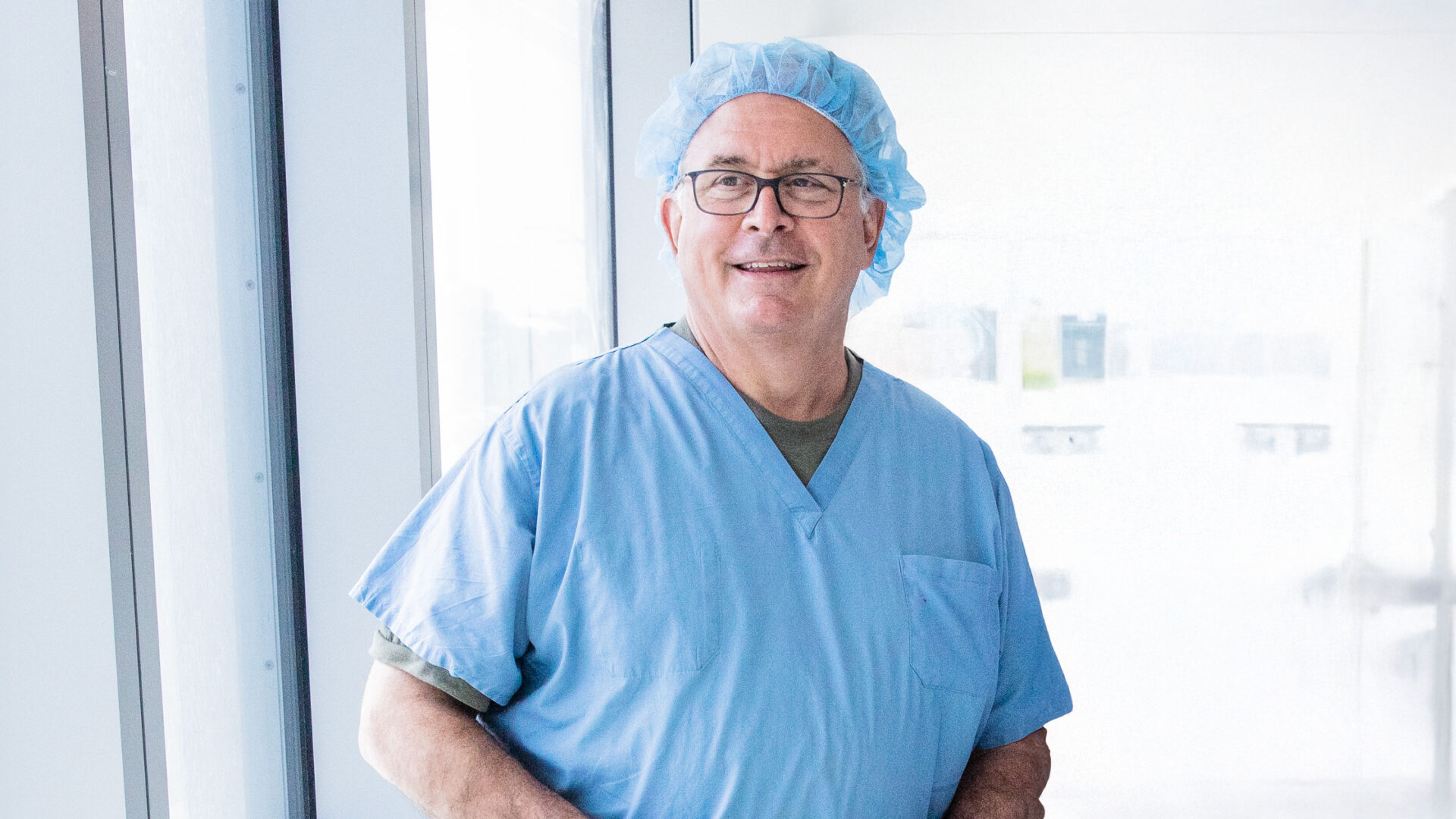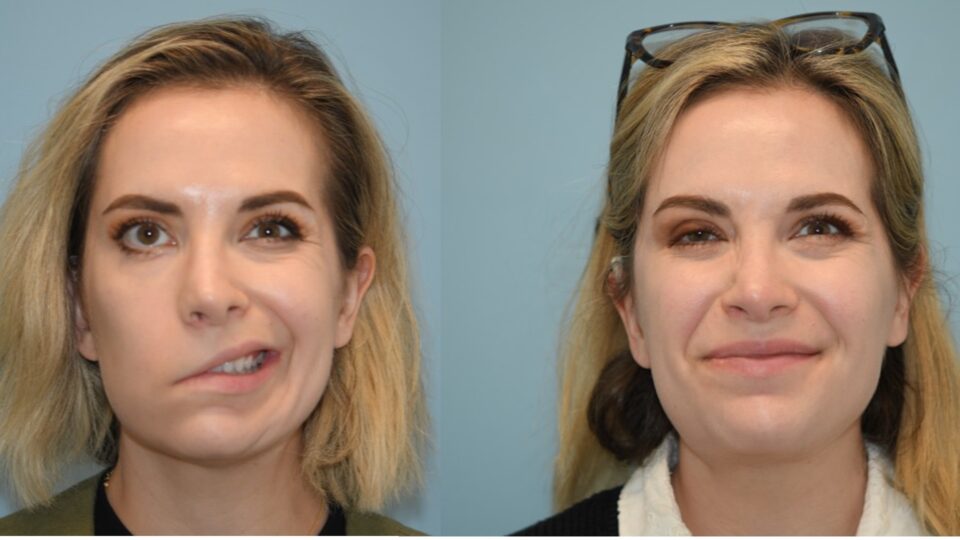Referral Notes:
- NYU Langone is a national leader in pediatric auditory brainstem implants (ABIs), having performed more than 30 procedures in children 12 and under—and expanding access to kids as young as 18 months.
- Outcomes range widely: 79 percent of patients gain some auditory benefit, from basic sound awareness to conversational speech without lip reading.
- Research is underway to refine outcome prediction, personalize post-op mapping, and optimize electrode placement for better hearing.
Since 2014, NYU Langone Health’s J. Thomas Roland Jr., MD, and colleagues have followed an FDA protocol to expand the use of auditory brainstem implants (ABIs) in pediatric patients. To date, the team has implanted more than 30 devices in children 12 and younger—more than any U.S. center—and has pursued ongoing research to quantify outcomes and enhance the treatment’s surgical and functional effectiveness.
“From new mapping ideas to rehabilitation enhancements, there’s a big, wide open area for learning, with a fundamental question to answer: How can we help these children have even better outcomes?”
J. Thomas Roland Jr., MD
“From new mapping ideas to rehabilitation enhancements, we are constantly searching for and sharing new insights with the field,” says Dr. Roland, a professor of otolaryngology—head and neck surgery and neurosurgery. “It’s a big, wide-open area for learning, with a fundamental question to answer: How can we help these children have even better outcomes?”
Identifying Candidates
For children with an absent or deficient cochlear nerve who cannot benefit from conventional hearing aids or cochlear implants, auditory brainstem implants (ABIs) offer an alternative pathway to some hearing function. Although ABIs are FDA-approved for children aged 12 and older with neurofibromatosis type 2 (NF2), NYU Langone is one of a select few centers nationwide offering them to patients as young as 18 months.
“To benefit from a cochlear implant, you need to have a cochlea and a cochlear nerve,” explains Dr. Roland. “So for children who are born without an intact cochlea—or who lose it due to infection or injury—the ABI can access the same auditory pathway as the cochlear nerve to present information the brain perceives as sound.”
At NYU Langone, eligibility for ABI implantation is determined using a combination of imaging, electrophysiologic testing, and hearing testing. For children born with complete deafness and no cochlear nerve, an ABI is the only available treatment. However, for children with even a thin intact cochlear nerve, a cochlear implant at around six months of age is often the first step, with an ABI considered at 18 months if the cochlear implant proves ineffective.
Predicting ABI Success
Though the surgical placement of ABIs in children with inner ear pathologies and severe sensorineural hearing loss has been proven safe and effective, predicting which patients will respond with robust sound perception remains a challenge. In a multicenter, retrospective chart review, Dr. Roland and colleagues found that 79 percent of pediatric patients experienced some improvement after ABI placement, from basic sound awareness to the ability to understand conversation without lip reading.
“There is a broad range of outcomes,” notes Dr. Roland. “It’s possible that a child could attain meaningful hearing, but there’s also a possibility that they will just gain environmental sound awareness.” An ongoing clinical trial led by Dr. Roland, neuroradiologist Timothy M. Shepherd, MD, PhD, and colleagues aims to develop methods for MRI delineation of the central auditory pathways, of abnormal cochlear nerve, and of auditory brain stem anatomy to better predict ABI success.
However, even minimal auditory information can substantially increase a child’s overall comprehension. “Some auditory information, combined with lip reading, gives the brain more to work with when it comes to receptive speech understanding,” Dr. Roland adds.
Finding Signals After Surgery
Pediatric patients from across the globe are referred to Hassenfeld Children’s Hospital at NYU Langone for ABI surgery, performed by Dr. Roland and colleague John G. Golfinos, MD, the Gray Foundation Chair of Neurosurgery.
Once Dr. Roland and Dr. Golfinos find the device’s target location in the brain stem and slide it in place through a thumbnail-sized opening, an hour of monitoring is spent verifying that the 21 electrodes of the device’s paddle reach the maximum number of auditory signals without non-auditory side effects.
“There’s no manual for programming an ABI. It requires experimentation, sending different information to the electrodes to try and provide the brain with meaningful signals.”
Though the procedure itself requires surgical expertise, Dr. Roland explains that what comes three weeks following the surgery—activating the device—is what truly helps optimize outcomes. “There’s no manual for programming an ABI,” he says. “It requires experimentation, sending different information to the electrodes to try and provide the brain with meaningful signals.
“Our research team has found that sometimes less is more,” he continues. “By reducing the number of active channels, based on electrophysiologic responses with a new test, we have discovered that patients’ word and sentence understanding improved.”
This approach likely reduces the amount of missense information that is channeled to the auditory cortex in the brain. Another research project investigates the use of similar measures to enhance precise placement of the electrode paddle in the operating room.
Dr. Roland and his team regularly share their case findings at international conferences and will host the 5th International Symposium on Pediatric Auditory Brainstem Implant at NYU Langone.






